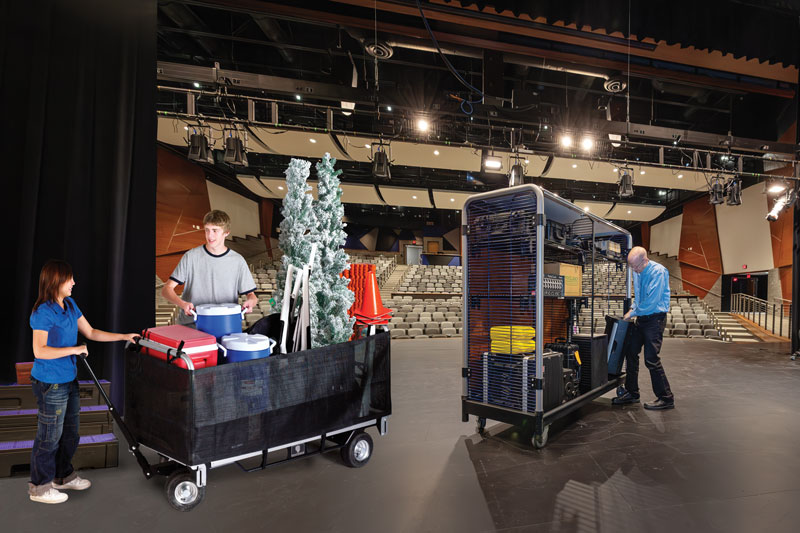 We don’t mean street-corner scalping or queuing in the rush line. This week we’re focused on buying the right audience seating for your facility, whether that’s a high school or historic theatre. We tapped our expert – Andrew Forsberg of Wenger – for his seven steps for successful seat selection. (Try saying that three times fast!)
We don’t mean street-corner scalping or queuing in the rush line. This week we’re focused on buying the right audience seating for your facility, whether that’s a high school or historic theatre. We tapped our expert – Andrew Forsberg of Wenger – for his seven steps for successful seat selection. (Try saying that three times fast!)
1) Know Yourself. What’s your facility and who do you primarily serve? Seats for a middle-school auditorium obviously face different demands and “patrons” than a professional venue. Paying audiences expect nicer aesthetics and pampering: higher-end materials (thick cushions and wood construction) along with premium fabrics.
2) Narrow Down. After you understand your facility’s demands and patron expectations, start narrowing down options. Manufacturers today offer a wide variety of choices. For example, Wenger recently added ten models to better accommodate different styles, aesthetics and budgets.
3) Pick a Number. Layout considerations will affect aesthetic decisions: How many seats do you need? Professional venues may have specific revenue targets for the box office. Schools usually try to accommodate enough students for assemblies, concerts or other events.
4) Which Width? The available space and desired seat count will determine what size and width of seats can be used. Common seat widths range from 19” to 23”, most are over 21”. For example, our Boston model was specifically designed to fit tight spaces. Rows and aisle widths also matter, often dictated by building codes or architect specs.
5) Listen Up. Although audience seating should be comfortable, people don’t sit forever. How much noise will your seat make when someone gets up? Counterweight systems, which rely on gravity, are more economical but can be too noisy for certain environments. Higher-end seats use a spring-and-dampening system that ensures a quieter return.
6) Test Sit. When comparing seats with similar price ranges and characteristics, your decision will come down to personal preference. Most manufacturers will send out sample seats to examine. Use your head – and your backside – to decide.
7) Consult Experts. Working with the space constraints and desired seat count, Wenger’s application engineers can design the layout that best optimizes sightlines. This involves staggering seats, likely incorporating a variety of seat widths and a radial arrangement of curved rows. The process blends art and science – like assembling a puzzle.
Good luck! With careful preparation, you’ll surely be comfortable with your choice









